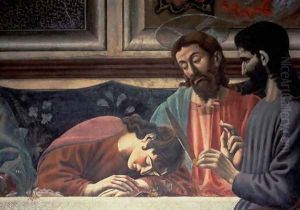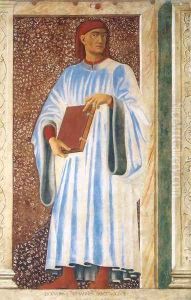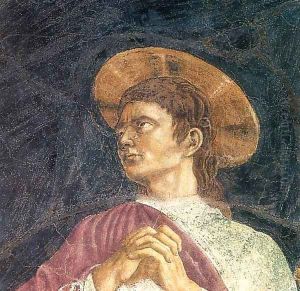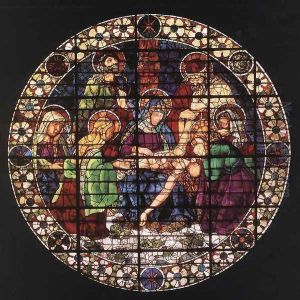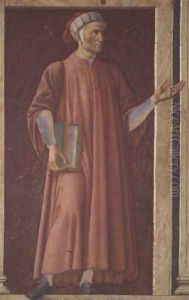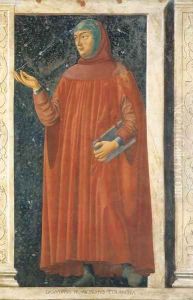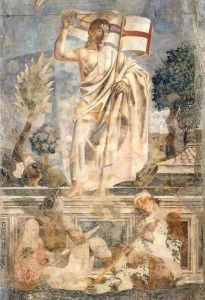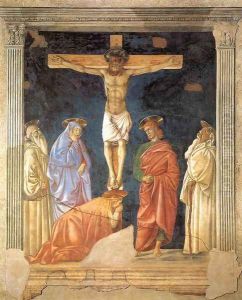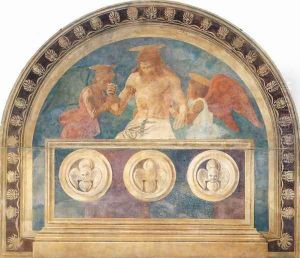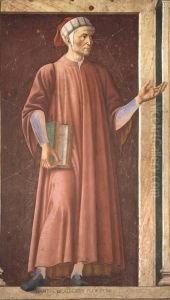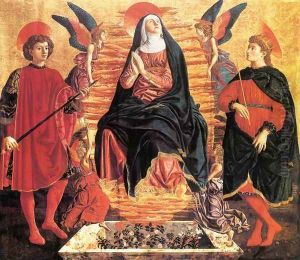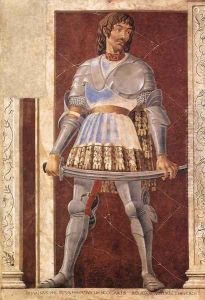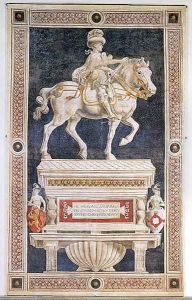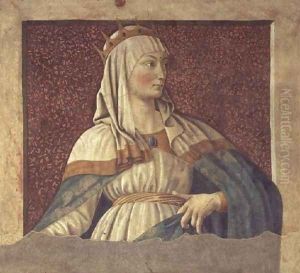Andrea Del Castagno Paintings
Andrea del Castagno, an influential Italian Renaissance painter, was born in the small town of Castagno, near Florence, around the year 1419. He was apprenticed at a young age and began his career as a muralist. Andrea's work was known for its powerful figures and pioneering use of perspective. His style reflected the transition from the Gothic to the early Renaissance.
In 1440, Andrea gained significant attention for his work in the Florence Cathedral. He was also commissioned to produce a series of frescoes for the Sant'Apollonia convent, which now houses the Museo del Cenacolo di Sant'Apollonia. Among his most famous works from this period is the 'Last Supper,' a fresco which displayed his mastery in creating the illusion of three-dimensional space on a flat surface.
He was also known for his contribution to the 'Funerary Monument to Sir John Hawkwood' in the Florence Cathedral, which he completed in 1436. This work was a fresco that was later transferred to canvas. Andrea del Castagno's ability to depict his subjects with such naturalism and vitality was advanced for his time and influenced future generations of artists.
Tragically, Andrea del Castagno's life was cut short when he died of the plague in 1457. Despite his premature death, his works continued to have a lasting impact on the art world, and his techniques were studied and admired by subsequent Renaissance masters.




